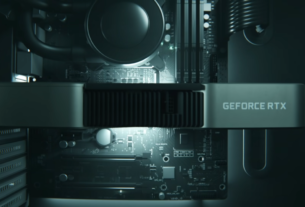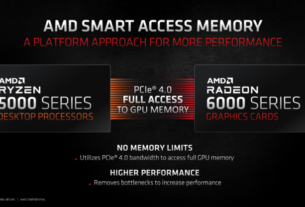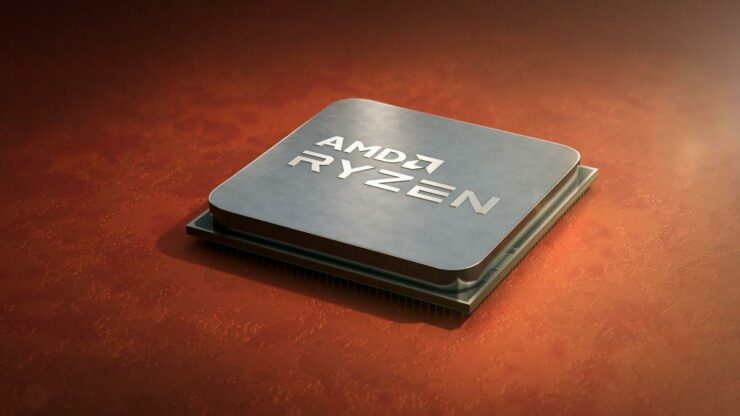
SiSoftware have just posted the first reviews for AMD’s Zen 3 powered Ryzen 7 5800X 8 Core & Ryzen 5 5600X 6 Core CPUs. The AMD Ryzen 5000 Desktop CPUs launch next week but the team over at SiSofware decided to post a full review of the processors based entirely on their own CPU benchmark suite.
AMD Ryzen 7 5800X 8 Core & Ryzen 5 5600X 6 Core CPUs Reviewed By SiSofware, Up To 40% Performance Improvement With Zen 3 Over Zen 2
According to SiSoftware themselves, both AMD Ryzen 5000 Desktop CPUs were tested on an X570 test bed with the latest BIOS installed from the specific manufacturer. The review highlights some of the key differences between Zen 3 and Zen 2 processors and evaluates the processors through their own test suite which is quite comprehensive. The tests include arithmetic, SIMD and also the cryptography performance. Before we get into the test results, let’s take a look at the specs & how Zen 3 Ryzen 5000 Desktop CPUs compare to their predecessors in terms of features.
AMD Ryzen 7 5800X “Zen 3” Desktop CPU – 8 Cores / 16 Threads Up To 4.7 GHz For $449 US
The AMD Ryzen 7 5800X is an 8 core and 16 thread CPU. This chip is marketed to be the best 8 core processor in the market for gamers with its impressive clock speeds of 3.8 GHz base and 4.7 GHz boost clocks. The chip features a total of 36 MB of cache and a TDP of 105W. The CPU is expected to be priced at $449.
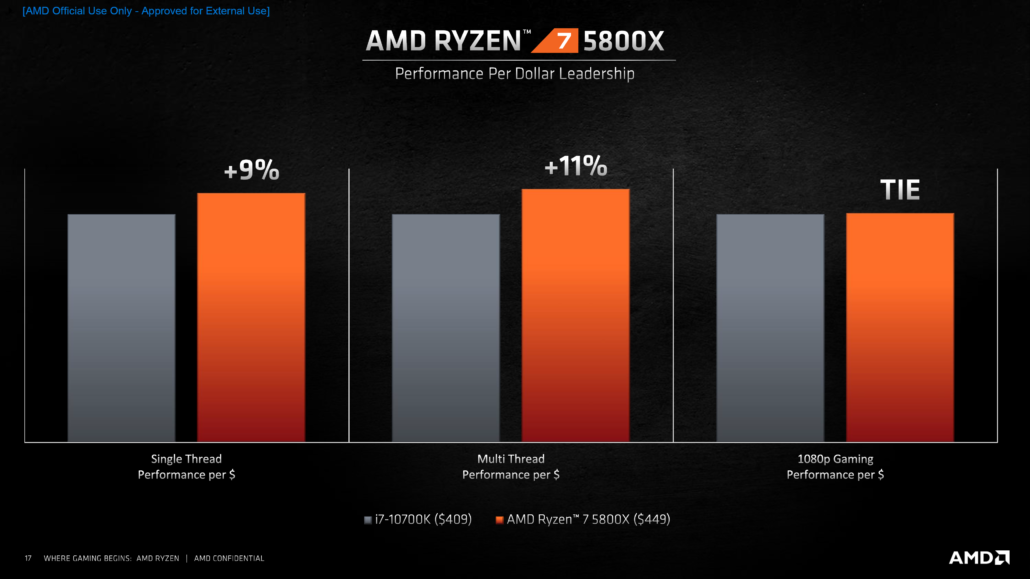
AMD Ryzen 5 5600X “Zen 3” Desktop CPU – 6 Cores / 12 Threads Up To 4.6 GHz For $299 US
The AMD Ryzen 5 5600X is a 6 core and 12 thread CPU. This chip is marketed to be the best 6 core processor in the market for gamers with its impressive clock speeds of 3.7 GHz base and 4.6 GHz boost clocks. The chip features a total of 36 MB of cache and a TDP of 65W. The CPU is expected to be priced at $299.

Some of the main features that were highlighted by AMD for its Ryzen 5000 Zen 3 processors will include:
- Claim +19% IPC overall improvement vs. ZEN2
- Higher base and turbo clocks +5-8%
- Still built around “chiplets” CCX (“core complexes”) but now of 8C/16T and 16MB L3 cache (still 7nm)
- Same central I/O hub with memory controller(s) and PCIe 4.0 bridges connected through IF (“Infinity Fabric”) (12nm)
- Still up to 2 chiplets on desktop platform thus up to 2x 8C (16C/32T 5950X)
- L3 is still the same 32MB but now unified (not 2x 16MB) still up to 64MB on 5950X
- 20 PCIe 4.0 lanes
- 2x DDR4 memory controllers up to 3200Mt/s official (4266Mt/s max)
Micro-architecturally there are more changes that should improve performance and security:
- Control Flow Integrity & Shadow Stacks
- Multi-Key Memory Encryption, e.g. individually encrypted VM memory
- Inter-core latencies reduced through shared L3 (8C and less); no more trips to memory to share data
- AMD processors have thankfully not been affected by most of the vulnerabilities bar two (BTI/”Spectre”, SSB/”Spectre v4″) that have now been addressed in hardware.
AMD Ryzen 5000 Series “Vermeer” CPU Lineup
| CPU Name | Cores/Threads | Base Clock | Boost Clock | Cache (L2+L3) | PCIe Lanes (Gen 4 CPU+PCH) | TDP | Price |
|---|---|---|---|---|---|---|---|
| AMD Ryzen 9 5950X | 16/32 | 3.4 GHz | 4.9 GHz | 72 MB | TBA | 105W | $799 US |
| AMD Ryzen 9 5900X | 12/24 | 3.7 GHz | 4.8 GHz | 70 MB | TBA | 105W | $549 US |
| AMD Ryzen 7 5800X | 8/16 | 3.8 GHz | 4.7 GHz | 36 MB | TBA | 105W | $449 US |
| AMD Ryzen 5 5600X | 6/12 | 3.7 GHz | 4.6 GHz | 35 MB | TBA | 65W | $299 US |
| AMD Ryzen 5 5600 | 6/12 | TBA | TBA | 32 MB | TBA | 65W | $219 US? |
AMD Ryzen 7 5800X 8 Core & Ryzen 5 5600X 6 Core Desktop CPU Benchmarks
Coming to the test results, SiSoftware measured up to 40% performance uplift for the AMD Ryzen 7 5800X over its predecessor, the Ryzen 7 3800X and gave it a score of 10/10. The Ryzen 5 5600X on the other hand managed a 16% lead over its predecessor, the Ryzen 5 3600X. The Ryzen 5 5600X is still considerably faster and posts up to 40% leads in a few benchmark tests but the difference isn’t that much when averaged across all benchmarks. The CPU still received a 9/10 score which is due to its impressive value and power efficiency.
AMD Ryzen 5 5800X 8 Core “Zen 3” Desktop CPU Test Results:
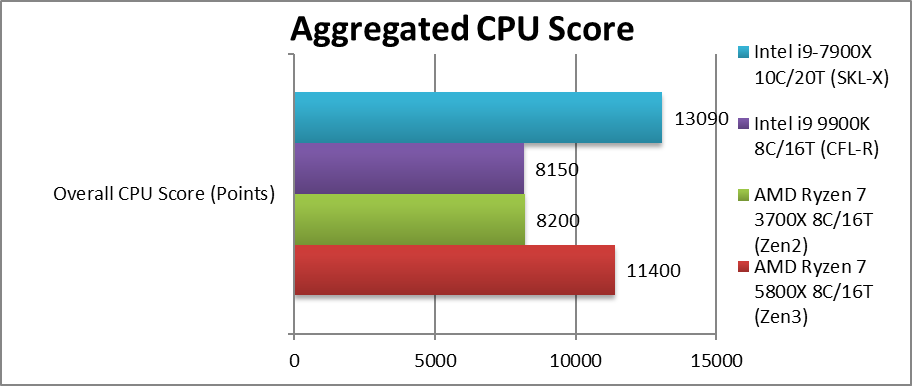
AMD Ryzen 5 5600X 6 Core “Zen 3” Desktop CPU Test Results:
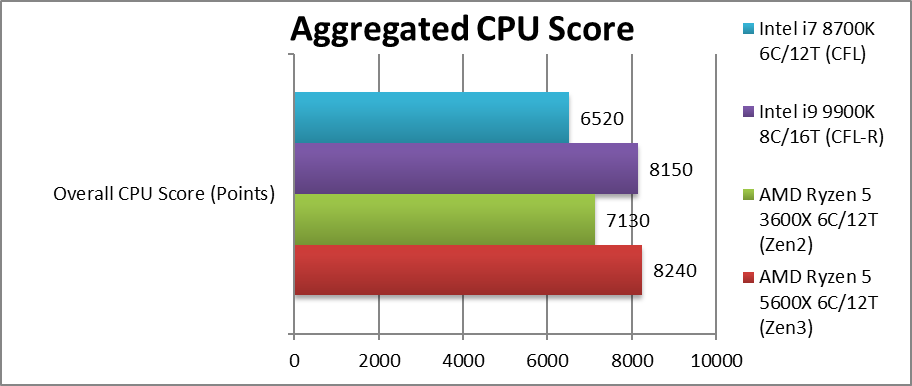
SiSoftware Review Conclusion: Despite no major architectural changes (except larger 8-core CCX layout and thus unified L3 cache) over Zen2 – Zen3 manages to be quite a bit faster across legacy and heavily vectorized SIMD algorithms, naturally also soundly beating the competition even with AVX512 and more cores (e.g. 10-core SKL-X). Even streaming algorithms (memory-bound) improve over 20%. We certainly did not expect performance to be this good.
In effect, it is like getting 50% more cores – 8-core Zen3 performs like a 12-core Zen2 (e.g. 3900X) – and thus even a 10-core 10900K cannot compete. Considering you can just “pop it” into an existing AM4 mainboard (naturally with a BIOS update) it is a massive upgrade from say, original Zen1/Zen+. If you can afford it – especially in these unprecedented times – it is a “no brainer” upgrade allowing older AM4-based computers to live many, many more years! You don’t really need PCIe4 and its modest improvement – which requires new PCIe4 NVMe SSDs and new PCIe4 GP-GPUs so even 300-series boards can do it.
Considering Zen2 is ~40% faster than Zen+ (never mind original Ryzen), Zen3 is in effect 2x faster than Zen+ – a 2x (96%) improvement over just 2 generations, while core counts remained the same (unlike Intel that just increased core counts). Also consider you can now get a 16-core/32-threads AM4 CPU (which originally only went up to 6-cores), it is like having a 32-core Ryzen in the same AM4 slot – a 5.3x increase in overall performance.
via SiSoftware
SiSoftware says that despite the smaller lead for the Ryzen 5 5600X, it is still enough to outclass the previous generation 8 core. So you’re essentially getting a much faster 8 core processor by paying the price of a 6 core chip.
For the Ryzen 7 5800X, the 8 core is phenomenal in performance and it is recommended to pre-order and purchase one as soon as possible since the site claims that there will be reduced stock at launch and due to increased demand from OEMs, the prices for the chips are likely to increase soon after launch on 5th of December.

